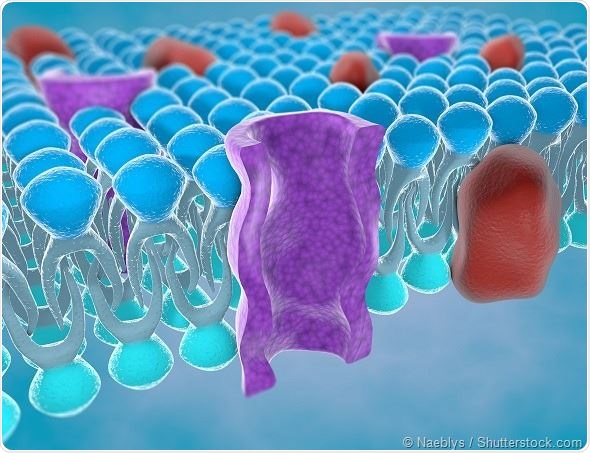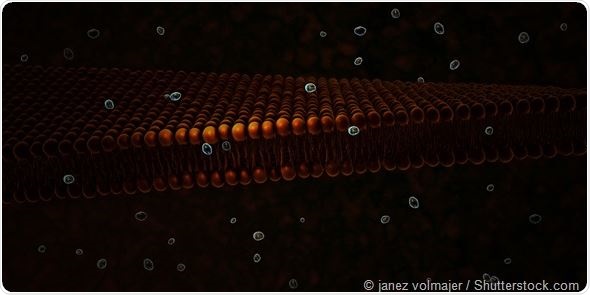Sponsored Content by PittconDec 9 2015
Ion channels and the cell membrane
Ion channels are essential to key cellular processes including signal transduction, osmoregulation and maintenance of the membrane potential. They are therefore the targets of many clinically used drugs.
Living cells depend on ion-transport proteins in the cell membrane to maintain the electrochemical potential gradients for a number of ion species including Ca2+, Na+, K+ and H+. Analysis of the function and transport mechanisms of ion pumps is key to understanding cellular metabolism.

Artificial lipid bilayers
The suspended lipid membrane, also known of as the black lipid membrane (BLM), is one of the first model membrane bilayers developed to allow the electrical characterization of lipid bilayers. A BLM is a free standing bilayer suspended between two aqueous compartments that allows direct access to both sides of the membrane, making it ideal for performing electrochemical measurement of the transmembrane transport of ions and molecules.
Enabling the incorporation of ion channels and other nanopores, BLMs provide a synthetic environment that aids the measurement of ion channel activity in a range of analytical platforms. BLMs play an important role in DNA synthesis and biochemical sensing, as well as being of potential use in medical diagnostics, biological sensing and other applications.
BLM stability
One disadvantage of using BLMs is their lack of electrical, mechanical and temporal stability; rupture usually occurs within a few hours of their formation, thereby precluding long-term experiments.
Researchers are currently developing solutions to help extend this lifetime, with examples including precise structuring of the supporting aperture, chemical cross-linking of lipids or gelling of the surrounding solution to provide mechanical support to the bilayer.
The poor stability of BLMs poses a significant challenge to the development of highly stable measurement platforms. The development of methods that could stabilize BLMs could lead to their use in biosensing platforms, drug screening and other applications.
BLM stabilizing techniques
In a study by Aspinwall et al (2015), researchers incorporated ethylene glycol dimethacrylate and butyl methacrylate into BLMs to form a cross-linked polymer scaffold in the lamella of the lipid bilayer, which significantly improved BLM stability.
When prepared on glass microapertures modified using saline, stabilized BLMs demonstrated significantly increased lifetimes of 23 ± 9 to 40 ± 14 hours. Mechanical stability was increased ten-fold and breakdown potentials of more than 2000 mV were attainable. Mean conductance measurements showed only minimal perturbation to the electrical integrity of the membrane.
When the ion channels alpha toxin and gramicidin A were reconstituted into the polymer scaffold-stabilized BLMs, they retained a function that was similar to that seen in conventional BLMs. The researchers believe these commercially available methacrylate monomers offer a widely accessible, low cost and simple approach to the formation of stabilized BLMs.
In a study by Saavedra et al (2009), BLMs were stabilized using polymerizable lipid bis-dienoyl phosphatidylcholine on glass pipettes of around 10μm. Following polymerization, steady conductance values were maintained by the BLMs for a number of weeks, as opposed to just a few hours when unpolymerized BLMs are used. The activity of alpha toxin incorporated into the BLMs before they were polymerized, was maintained for one week after the formation and polymerization of the BLMs.
In a 2013 study, Brisson et al investigated free-standing lipid bilayers in nano- and micro-pores as attractive membrane models for biotechnological studies.
They prepared proteo-lipid monolayers and bilayers on hydrophilic surfaces using the Langmuir Blodgett technique and on hydrophobic surfaces using Langmuir Schaefer transfer. Microscopy imaging demonstrated the creation of suspended proteo-lipid layers.
The team produced continuous proteo-lipid mono- and bilayers using Annexin-A5 as a membrane-associated protein and the layers spanned pore arrays over several hundred square-micrometers.
During the transfer process, there was good preservation of the organization of proteins associated to lipid layer. The addition of a Ca2+ -chelator following transfer released the associated proteins, which opens up the possibility of incorporating transmembrane proteins such as ion channels or transporters by fusing proteoliposomes to the bilayers.
Brisson et al say this simple formation of stabilized, free-standing lipid films represents an important first step towards the creation of biomimetic membranes that can be used for applications in membrane protein research and drug discovery.

Symposia at Pittcon 2016
The world’s largest annual conference and exposition for laboratory science, Pittcon, is being held between the 6th and 10th March 2016 in Atlanta, Georgia. The event’s impressive technical program will feature more than 2000 presentations.
The stabilizing of lipid bilayers will be amongst the subjects discussed at these symposia. We will hear about stabilizing BLMs as a platform for the creation of ion channel functionalized sensors and current strategies that may further improve BLM stability.
Among the 683 organizations exhibiting at Pittcon, will be Van London Co., which specializes in the manufacture of high quality electrochemical sensors, including those used for ion-specific applications. The instruments are designed for use in laboratory, industrial, biotechnological and medical applications.
Also exhibiting is Analytical Sensors & Instruments, an industry leading manufacturer of custom designed, cost-effective electrochemistry sensors and Shanghai Ruosull Technology, also specialists in the manufacture of high quality, competitively priced electrochemical sensors.
References
Aspinwall C, et al. Methacrylate Polymer Scaffolding Enhances the Stability of Suspended Lipid Bilayers for Ion Channel Recordings and Biosensor Development. ACS Biomaterials & Engineering 2015;1:955–963
Aspinwall C and Baker C. Emerging trends in precision fabrication of microapertures to support suspended lipid membranes for sensors, sequencing, and beyond. Analytical and Bioanalytical Chemistry 2015;407:647–652
Brisson A, et al. Free-standing lipid films stabilized by Annexin-A5. Biochemica et Biophysica Acta 2013; 1828:2739–2744
Saavedra S, et al. Enhanced Long-Term Stability for Single Ion Channel Recordings Using Suspended Poly(lipid) Bilayers. Journal of the American Chemical Society 2009;131:6662–6663
About Pittcon
 Pittcon® is a registered trademark of The Pittsburgh Conference on Analytical Chemistry and Applied Spectroscopy, a Pennsylvania non-profit organization. Co-sponsored by the Spectroscopy Society of Pittsburgh and the Society for Analytical Chemists of Pittsburgh, Pittcon is the premier annual conference and exposition on laboratory science.
Pittcon® is a registered trademark of The Pittsburgh Conference on Analytical Chemistry and Applied Spectroscopy, a Pennsylvania non-profit organization. Co-sponsored by the Spectroscopy Society of Pittsburgh and the Society for Analytical Chemists of Pittsburgh, Pittcon is the premier annual conference and exposition on laboratory science.
Proceeds from Pittcon fund science education and outreach at all levels, kindergarten through adult. Pittcon donates more than a million dollars a year to provide financial and administrative support for various science outreach activities including science equipment grants, research grants, scholarships and internships for students, awards to teachers and professors, and grants to public science centers, libraries and museums.
Visit pittcon.org for more information.
Sponsored Content Policy: News-Medical.net publishes articles and related content that may be derived from sources where we have existing commercial relationships, provided such content adds value to the core editorial ethos of News-Medical.Net which is to educate and inform site visitors interested in medical research, science, medical devices and treatments.